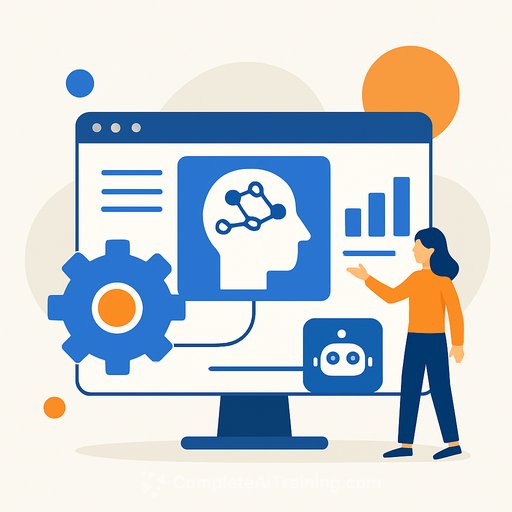Oracle launches AI Data Platform to unify agentic AI development
Oracle introduced the AI Data Platform, a unified stack that brings together OCI, Oracle Autonomous AI Database, and OCI Generative AI. The goal: give teams one place to build AI models, applications, and agents with enterprise-grade security and governance.
Oracle also released Oracle AI Database 26ai as the successor to Oracle Database 23ai, and unveiled Autonomous AI Lakehouse. Both feed into the new platform.
What's new
- AI Data Platform: A single environment that blends data lakehouse and AI tooling for building agents and AI apps, with shared governance and a unified catalog.
- Oracle AI Database 26ai: Adds stronger vector search, supports Apache Iceberg tables, includes Model Context Protocol (MCP) support for agent building, and offers a range of LLMs and AI frameworks.
- Autonomous AI Lakehouse: Combines Autonomous AI Database with Iceberg and introduces the Autonomous AI Database Catalog to unify data from AWS, Databricks, and Snowflake.
- Agent capabilities: Support for Agent2Agent Protocol and MCP to standardize how agents interact with data sources and with each other, plus an Agent Hub to discover and orchestrate task-specific agents.
Why it matters for IT and development leaders
- Single workspace for teams: Data engineers, data scientists, and developers can collaborate on data, models, and agents without stitching together multiple tools.
- Production focus: Emphasis on scale, performance, and governance for agentic apps that need to run reliably in production.
- Industry editions: Planned versions for healthcare, financial services, construction, and consumer goods, plus editions integrated with Fusion Applications and NetSuite.
- Oracle-first strategy: Helps existing Oracle customers reduce tool sprawl and keep projects on Oracle infrastructure.
Analyst perspective
Kevin Petrie (BARC U.S.) called it a logical extension of Oracle's stack that ties data, model, and agent lifecycles together. In his view, the tech updates are incremental, but the unification strengthens Oracle's hand and adds vectorization for unstructured data and knowledge graph assembly to improve model inputs and outputs.
Stephen Catanzano (Enterprise Strategy Group, part of Omdia) highlighted the significance of a single platform that connects models with enterprise data, apps, and workflows. He pointed to Agent Hub as the standout feature for routing requests, invoking the right agents, and enabling action, making AI more accessible to business users.
Where it sits vs. competitors
Oracle now matches peers that already bundle AI development with data platforms. Databricks and Snowflake rolled out agentic capabilities, including MCP support, earlier this year. Microsoft, AWS, and Google Cloud offer similar suites. The consensus: this may not outshine rivals on features, but it will help Oracle retain customers by reducing the incentive to switch.
What the platform enables
- Turn raw data into applications faster by unifying lakehouse, AI development, and governance.
- Build agents that orchestrate workflows, trigger alerts, and automate repetitive tasks.
- Use vector search to combine unstructured and structured data for retrieval-augmented generation and analytics.
- Standardize agent interaction patterns with MCP and Agent2Agent Protocol.
Key technical notes
- Apache Iceberg: Open table format for large-scale analytics and multi-engine access. Learn more at Apache Iceberg.
- Model Context Protocol (MCP): A protocol to simplify tool and data access for AI agents. Reference implementation at MCP on GitHub.
- Catalog unification: Autonomous AI Database Catalog and the platform's own catalog aim to reconcile assets across AWS, Databricks, and Snowflake.
- Agent Hub: A discovery and orchestration layer to find agents for specific tasks and route requests intelligently.
Checklist for adoption
- Scope: Start with narrow, ROI-backed agent use cases (e.g., ticket triage, policy checks, marketing ops, supply-chain alerts).
- Data readiness: Define Iceberg table strategy, vectorize key unstructured sources, and tag sensitive fields in the catalog.
- Governance: Enforce lineage, access policies, and audit across models and agents. Validate retrieval sources for compliance.
- Integration: Map workflows across Fusion, NetSuite, and third-party apps. Verify MCP/Agent2Agent coverage for required tools.
- MLOps: Set up evaluation, drift monitoring, and rollback for models and agents. Track cost per call and per workflow.
- Migration: Plan upgrades from Oracle Database 23ai to 26ai, including compatibility for packages, extensions, and app dependencies.
- Lock-in risk: Balance Oracle-native services with open formats (Iceberg) and protocol-based integration to preserve flexibility.
- Pilot: Run a 60-90 day pilot that proves latency, accuracy, and operational fit before scaling.
Bottom line
Oracle's AI Data Platform packages its data and AI assets into one environment for building agents and AI apps. It may not outpace rivals on features, but for Oracle shops it cuts integration work, tightens governance, and speeds delivery-especially with 26ai, Iceberg support, MCP/Agent2Agent, and Agent Hub.
Level up your team
If you're planning agent projects or upgrading skills across data, engineering, and product, explore curated learning paths and certifications:
Your membership also unlocks:










